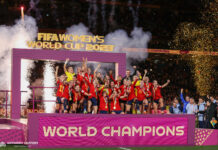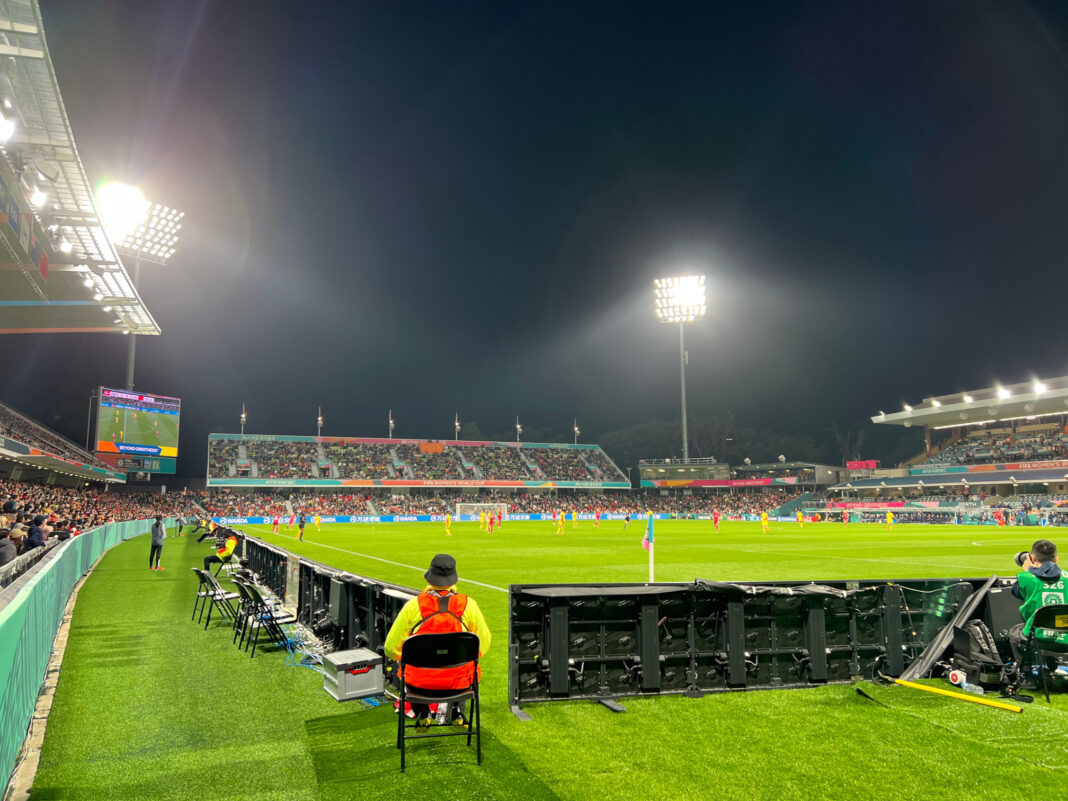

With the dust now settling on an extraordinary World Cup that brought unheralded attention to the sport in this country, now is a good time to pause and reflect on the experience of the tournament.
Volunteer 2023 FIFA Women’s World Cup
For one group of people, this was a very special 31 days. 5000 volunteers attended all the games in Australia and NZ and ensured everyone who attended had an experience to savour and that the watching millions got to enjoy the spectacle as well.
Whether it was working in the transport teams that ferried the VVIPs, VIPs, players or officials from venue to venue, as part of the “last mile” experience at the stadium, working behind the scenes to make sure the all-important comms and IT systems functioned to provide the images and sounds of the games to a worldwide audience, helping the FIFA marketing and media teams, working in the hospitality area for VIP’s, providing assistance to the drug testing teams or involved in any other aspect of the game day experience, it’s no exaggeration to say that the tournament would not have been as big a success as it was without the work of the volunteers.
To be a part of the team you had to pass a selection process before the tournament started via an online application and video interviews, before being assigned a role and city based on the individuals’ preferences. Those who were selected were then given further online training for their role, followed by a face-to-face training day at the venue.
It was on this day that each group met their FIFA managers and were given their all-important volunteer uniform, consisting of two pairs of cargo pants, three pairs of socks, one short-sleeved and one long-sleeved shirt, a hoodie, a sleeveless puffer jacket, a long waterproof parka style jacket, a pair of shoes, a beanie, a baseball cap and a backpack. All equipment was supplied by Adidas and ensured each volunteer at each venue was easily recognisable.
Accreditation was also provided to allow volunteers entry to the stadium, hotels, training venues and anywhere else they were needed with tight security in and around venues and hotels ensuring that only those with the right accreditation were allowed to be there.
Every stadium had its own volunteer centre for bag drops, meals and drinks and was an area where you could mingle with other volunteers from other areas and get to find out what they did. It was fascinating chatting with people who had volunteered for many events and seemed to spend their free time travelling the world attending World Cups, Olympic games and many other sporting events.
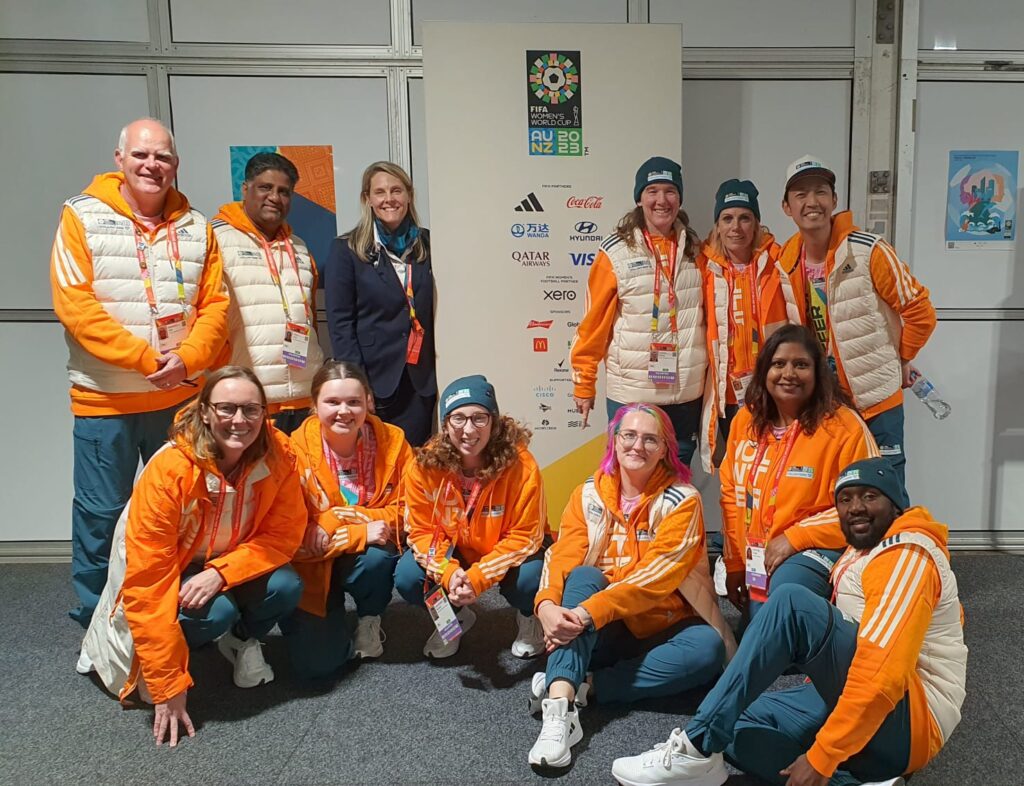
I was one of 18 volunteers in the media team in Perth and we came from Australia, the UK, the USA, Tibet and Ukraine and were managed by four FIFA media officers from Australia, Japan and Brazil. It was our task to provide support for the world’s media and allow them access to players and coaching staff on the day before the game as well as the game day itself.
As part of the preparations for the tournament, Perth rectangular stadium had a full dress rehearsal of the facilities on the day before the opening ceremony in NZ to make sure all was working well for the game day experience, and this included a 40-minute game between two local NPLW teams.
The teams were picked up by official FIFA team buses and delivered to the stadium where they entered via the mixed zone. It was here that one player from each team was selected for a mock TV interview before going into the dressing rooms.
The full light and sound system in the stadium was tested as well as choreography for the large centre circle banner, FIFA flag and national flags. National anthems were played with camera crews filming the local players which caused great hilarity when they saw their faces on the huge video screens!
The game was then played as normal, but there were with slow-motion replays of the goals being shown, and a test of the VAR system. When the game finished the two coaches and the player of the game then attended a post-match press conference where they were asked mock questions by members of the “international” media.
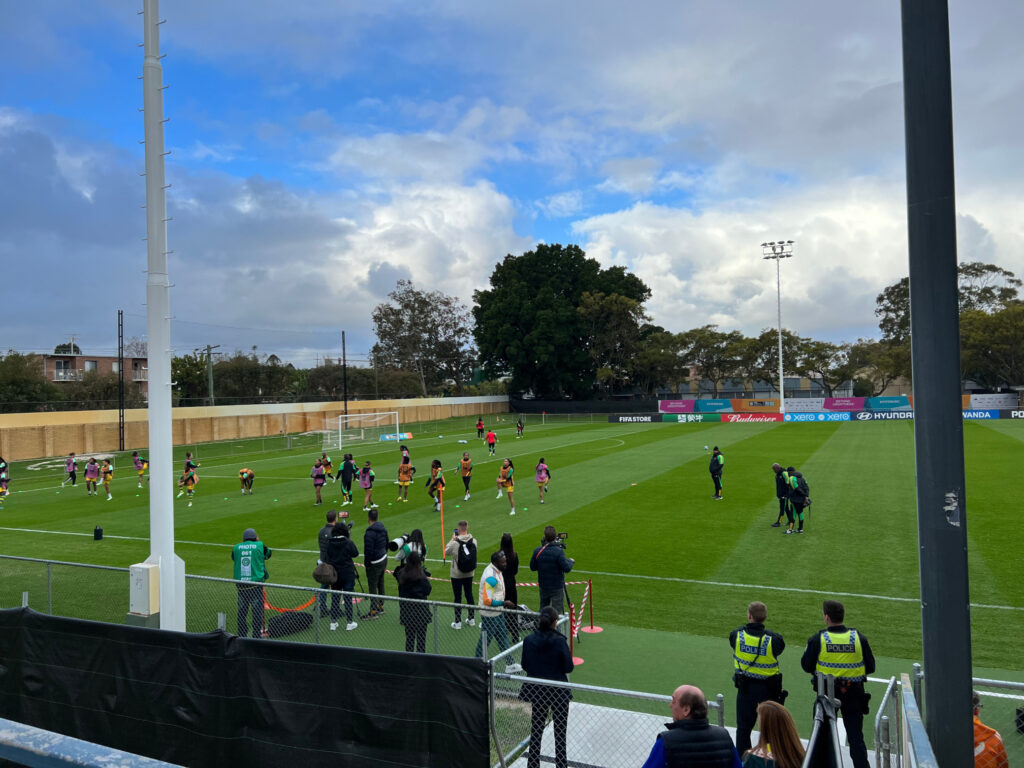

The media volunteers swung into action for every game on the day before kick-off, with four volunteers assisting at the two training venues where teams had their final hit out before the match. The media were corralled into an area away from training before being allowed to film for 15 minutes after which they returned to their designated area before the media shuttle bus would take them back to the stadium for the pre-match press conferences. This access was also managed by the team media officer who worked with the FIFA media managers to determine the level of accessibility. Some teams were quite relaxed, with the Jamaican team being particularly laid back as their music blared out during the session. The experience at the Matildas training was more tightly controlled though as described by Beyond90 writer Kerri-Anne;
“I’ve been to the last 2 Women’s World Cups in France (2019) and Canada (2015) and knew that I wanted to be a part of the success of a World Cup being hosted on home soil,” she said.
“I already knew I would be attending as many matches as I could and I didn’t want to miss any games, so I chose to volunteer for a training site role. I wasn’t completely sure what volunteering for the training site would involve, but I had visions of being able to watch the players train, have some minor interactions and be able to be on the fringes of the action.
In part this was correct. We volunteers would arrive early to the training venue to make sure everything was set up and ready, but as soon as the team arrived we retreated to the break room with its blacked-out windows. We would await their departure, then go out and pack things up ready for the next day, which meant that the football viewing was non-existent on a shift. Other sites were more relaxed and volunteers were able to watch and mix with the teams a little more.
On the plus side, I got to witness the well-oiled FIFA machine as volunteers were organised and made to feel appreciated with the gifts of a uniform, deals from sponsors, drinks and meals while on shift, and souvenirs especially made for volunteers. I met other volunteers who all had their own footballing stories: from being a FIFA match agent; to being coaches for local women’s teams; to just wanting to help out; and to being super fans like myself. So, while the days themselves were not the most exciting, I still felt the buzz of being part of a team with the wonderful staff at QSAC helping make the tournament a success.”
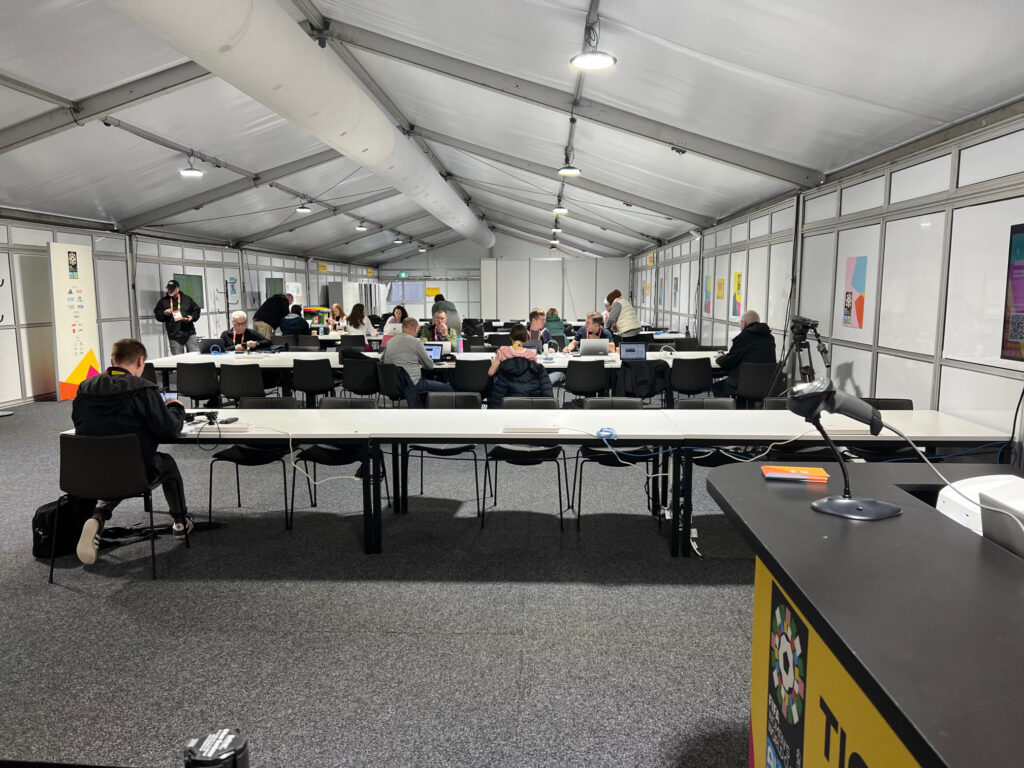

Away from the training venues, there was also activity at the rectangular stadium with media and photographers from around the world and locally in Perth descending on the stadium media centre looking for their tickets to sit pitch side, attend media conferences, the mixed zone and broadcast area.
All those who were attending games had to have FIFA approval and their accreditation was scanned into a system to make sure they were who they said they were and had permission to attend the various areas on game day. As volunteers we quickly learned what the different colours on accreditation passes meant and also the difference between photographers wearing green bibs and those wearing blue FIFA bibs.
Once the media settled into the centre they began filing stories using the IT services set up for the tournament. The centre was at its fullest for the Ireland vs Canada game, and there was much good-natured banter between the various journalists, many of whom were completely confused by time zone differences having flown in from Melbourne and Sydney where the two teams had played their previous games.
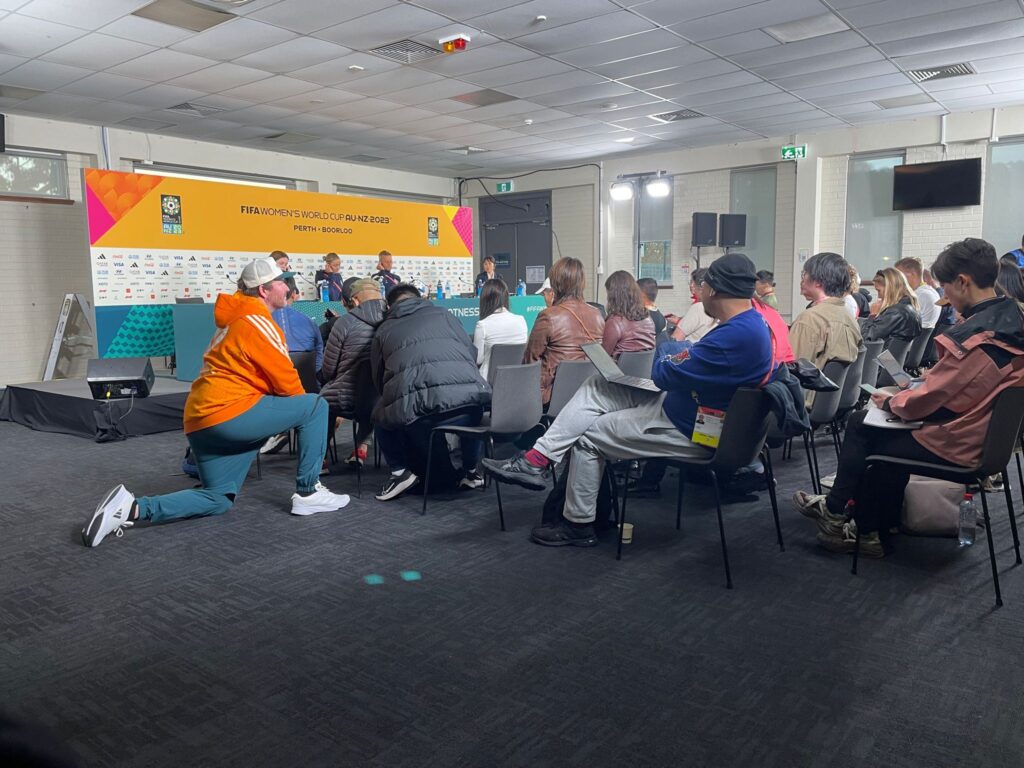

Pre-match press conferences were well attended and one of the jobs of the volunteers was to ensure the translation app was working on the phones assigned to the press conference table. There were no translators on site, so technology was used to provide a link to remotely based translators via the phone app.
The volunteers also acted as “handlers” for the conference by passing the microphones to the journalists under the guidance of the FIFA media managers. This provided all the volunteers with an opportunity to watch coaches and selected players respond to questions from national and local media in an environment that no fan would ever experience.
The players would also arrive at the stadium for a familiarisation tour and it was the volunteer’s job to ensure that photographers and broadcast media didn’t enter the playing area or attempt to interview players without permission. The sight of experienced players showing obvious excitement at getting onto the field was heartwarming and there were many selfies and group photos that emphasised just how much playing in a World Cup means.
The game day itself was the big one with all volunteers called in from about four hours before kick-off and sometimes not leaving until three hours after the game finished. On arrival, you were assigned a task for the game, and this was organised by the FIFA Venue Media Manager. There were five areas to work in, pitch side, media tribune, mixed zone, media conferences and media centre.
Pitchside was where four volunteers worked with the photographers to make sure they sat in one of the 80 allocated seats and didn’t wander around during the game, which obviously meant staying out in the open with them. This was great when the weather was kind, but the game between Canada and Ireland was a real test of everyone’s patience and wet weather gear!
Each photographer’s seat had its own internet cable to allow them to send images almost instantaneously to various agencies and there were also areas for pitchside cameras which had their own network cables to get the images out to the world. Prior to kick off the photographers would gather near the halfway line to get shots of the teams lining up for the anthems, and they were kept in an enclosed area by the use of a rope to hold them back. There was a lot of jostling at this point as each photographer tried to get the best shot possible. The substitutes and coaching staff of the teams would also come and stand by the rope and it was quite emotional to be no more than a metre from them as they belted out their national anthems.
Having a pitch-side view of the action was something I will never forget, and the game between China and Denmark was one that was very tense with every player on the pitch straining every muscle and sinew to win the game for their country. I was fortunate enough to be standing near the corner when the Danish scored their goal and the noise from the crowd was incredible, plus the sheer joy of the Danish players as they celebrated wildly.
Once the game was over it was the job of the volunteers to ensure the photographers cleared the photo area and moved back to the media centre, but when the weather was good a number of them would stay pitchside and edit images there. Talking to some of them after the game was an eye-opener as the sheer number of images taken (over a thousand per game) was incredible, and out of those perhaps only two or three would be used.


Some of the pitchside volunteers would then go to the mixed zone immediately after the game and help manage the media in that area. This was where the players would walk through after the game and could be interviewed on camera or via print media if they wanted to stop and chat. We had to make sure that only the broadcast media shot videos and the print media were restricted to voice interviews only. We were also there to ensure that players were left alone if they didn’t wish to be interviewed. Many players just passed through this area as quickly as possible without stopping, but some would stop and chat.
The raw emotions on display were something to behold as they ranged from joy and happiness to realisations that their world cup dream was over. Ireland’s Katy McCabe was one of the latter after the 2-1 defeat against Canada meant her side would be going home after their last group game, but she spent a long time chatting with the Irish media.


The exhaustion on her face was palpable but she remained defiant and upbeat and the media were clearly enthralled as she spoke of this tournament being a defining moment for the women’s game in Ireland, and that she and her teammates were determined to use it as a springboard for bigger and better things.
Away from the pitchside view, the best place to watch the game was in an area called the media tribune. This was where the media sat during the game and where the broadcasters did their commentary for the various networks around the globe.
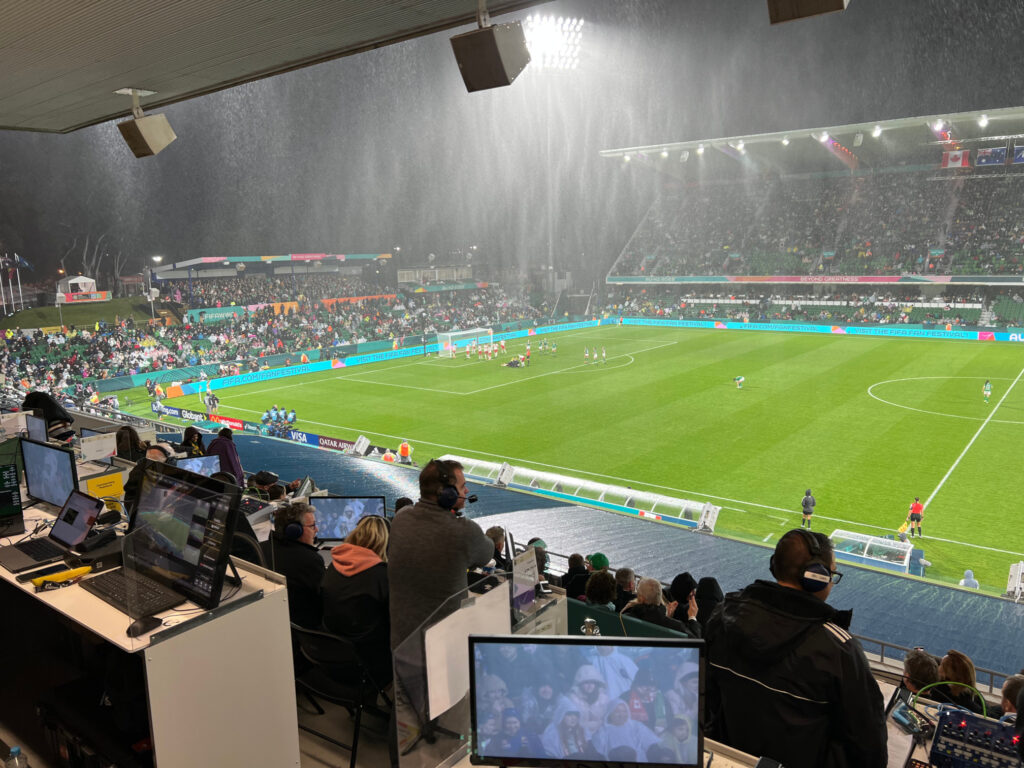

This was also the area where the teams had tactical analysis positions and they not only had a bird’s eye view of the game but also had access to huge amounts of data tracking players’ movements in real-time. All of this was then fed back to the pitch side coaches via comms links to provide the head coach with as much information as possible to help them make tactical switches. Tom Sermanni, the ex-Matildas coach, was working for the Canadian team as a tactical analyst and it was great to chat with him before the game, especially about the Nigerian team who he was immensely impressed by.
With commentators making the call all around you, it was sometimes difficult to concentrate on making sure that all their comms needs were attended to, but the IT during the games was incredible and help was always just a few metres away. Being in the stand also meant you missed the worst of the weather, but also experienced the tremendous atmosphere at the games. The noise when the Irish scored the opening goal against Canada was deafening and seeing the journalists from RTE (the Irish national broadcaster) leaping around at that point was another reminder (if ever one was needed) about just how exciting and emotional the beautiful game is. The media tribune was also situated above the VIP area and it was lovely to see ex-Matildas, Kim Carroll, Collette McCallum, Danielle Brogan and Sarah Walsh all sitting together and enjoying the games.
The press conference was the final act of the day for the media team and, as with the pre-game conferences, the volunteers were there to ensure that only the correctly accredited people were in attendance and also ensure that only those identified by the FIFA media manager got to ask questions. The Jamaican coach after the win against Panama was really entertaining as he chatted with the journalists about the match against Brazil that would determine if they moved into the knockout phase. He acknowledged that many of his countrymen would be torn between supporting their home team or Brazil, a team that many Jamaicans adore. As we all know his team were superb in the game against Brazil, holding them to a goalless draw to knock them out.
It’s hard to really put into words just what an experience it was to volunteer at the World Cup. The football was electric, the crowds superb and the whole vibe on game day was just amazing with so many people from different parts of the world coming together and it’s something I will cherish forever.
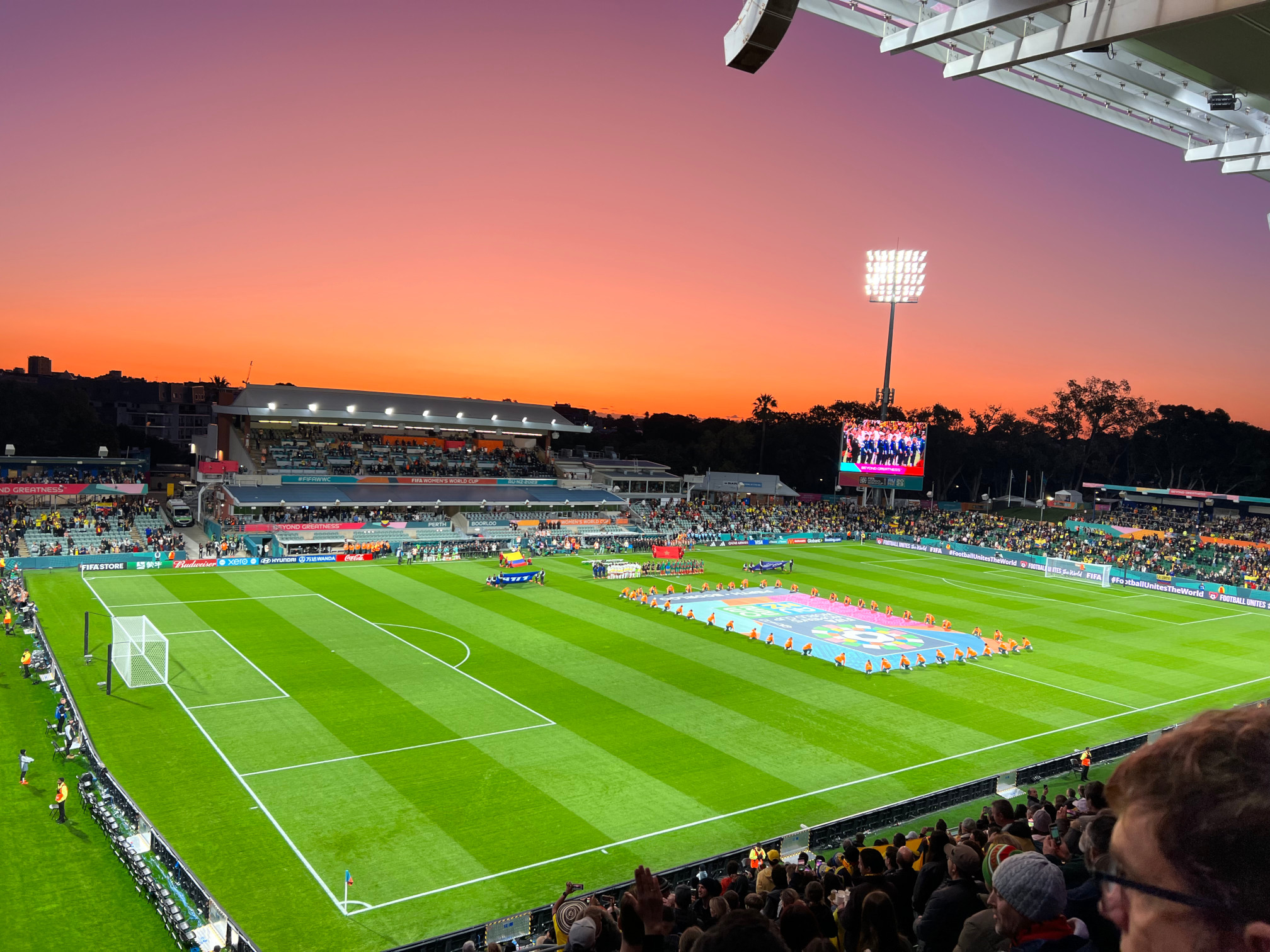

Catch up on Beyond 90’s coverage of the 2023 FIFA Women’s World Cup





